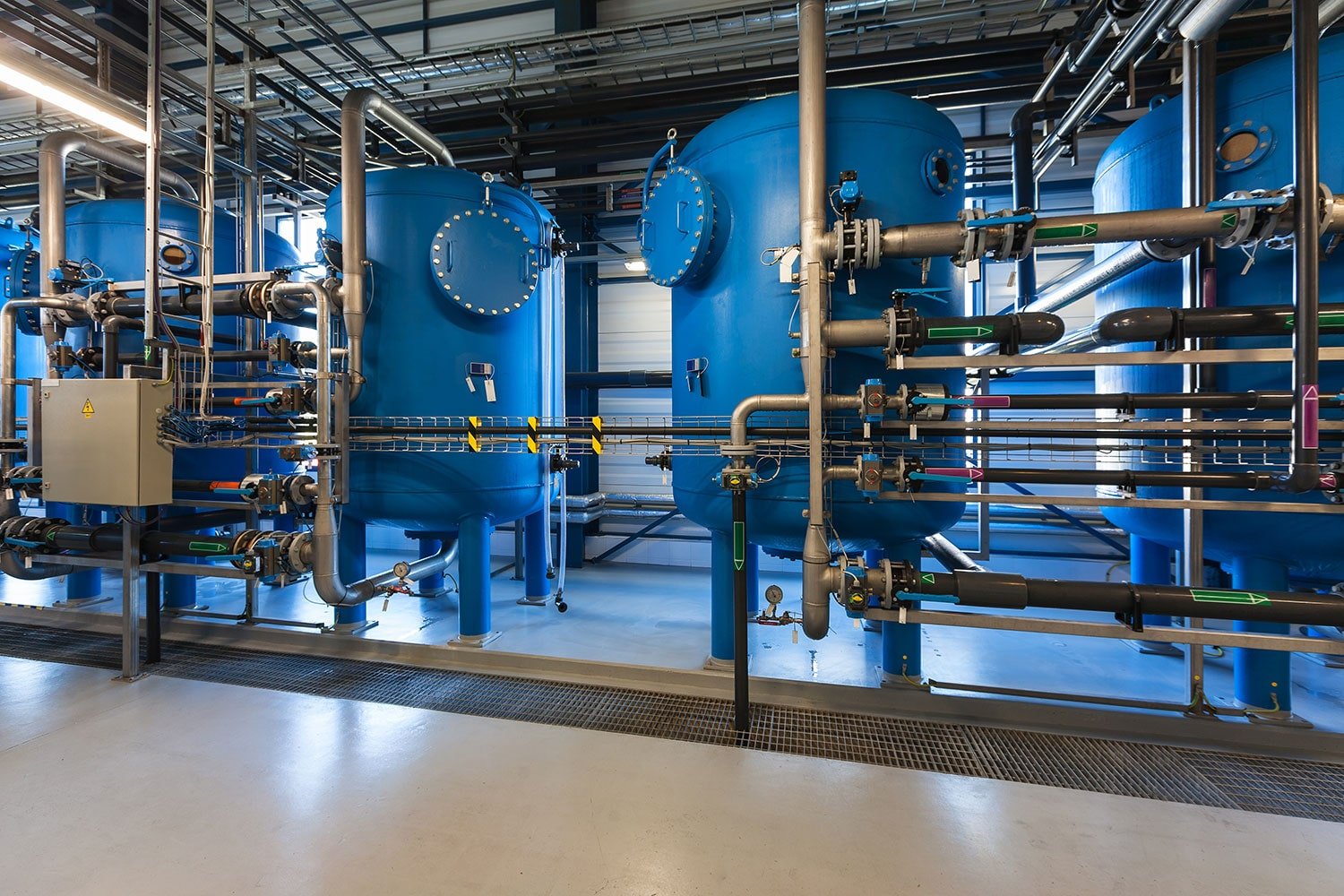
The industry generates various types of liquids, including rinse water, process water, boiler water, and others, which play crucial roles in diverse processes. To ensure these liquids meet specific purity standards, they undergo treatment in demineralization plants. In these plants, water is subjected to a two-column system comprising a cation exchange column followed by an anion exchange column.
During the demineralization process, water first passes through the cation exchange column, where positively charged ions such as calcium, magnesium, and sodium are exchanged for hydrogen ions. This step removes cations from the water, effectively reducing the mineral content.
Subsequently, the water flows through the anion exchange column, where negatively charged ions like chloride, sulfate, and carbonate are exchanged for hydroxyl ions. This process eliminates anions from the water, further enhancing its purity by removing additional mineral contaminants.
By utilizing this two-column system, demineralization plants effectively reduce the mineral content of the liquids produced by the industry. This ensures that the water meets the required purity standards, making it suitable for use in various industrial processes without causing scale formation or other undesirable effects.